Sharing the gift of music with students of any age is a special privilege only given to a certain type of musician. Ideally, music teachers have patience, excellent communication skills, tenacity and a detailed plan for how their lessons should go. For piano teachers, piano lesson plans are going to change drastically from student to student, but each lesson should share the characteristic of helping the student to progress, move forward with whatever material they’re covering, and to keep expanding their musical prowess and understanding.

The Warmup
It’s a good idea to start off piano lessons with a few minutes of warming up. If your lesson is only half an hour, you might not want to spend too much time doing this and you should tailor your piano lesson plans accordingly. The difficulty of these warmups will depend on the skill level of your piano student. For younger or more inexperienced piano students, I usually start their lessons off with a simple warmup by having them playing C-D-E-F-G and then G-F-E-D-C using 1-2-3-4-5 and 5-4-3-2-1 fingering beginning at middle C, one hand at a time. It’s an easy, simple warmup that helps introduce the idea of how important fingering and correct hand position is for playing piano. Younger students probably won’t be able to do this warmup right away, but have them try it a few fingers at a time and they’ll get better and better at it every week.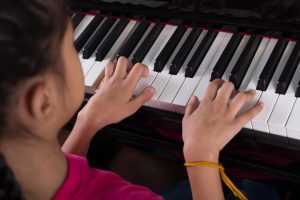
For piano lesson plans that are designed for more experienced students, I usually recommend going over exercises from the Hanon book. This book is contains exercises that are suited for everyone from newer students to accomplished, seasoned pianists. These exercises are designed to improve muscle memory, dexterity, and coordination, but they will also help a student improve their music-reading skills. Hanon exercises can be long and monotonous, and it takes a certain type of learned focus for students to be able to keep reading the page due to the repetitive nature of the material.
Improvise
Many teachers fail to add improvisation into their piano lesson plans, but I think it’s absolutely crucial that students of any age and background have time and space to explore creativity with the piano in an instructional setting. When students of any age show signs of wanting to explore the piano, we should enthusiastically encourage them and explain how to get started. Set aside a few minutes of your lessons and encourage your students to explore various keys, modes, and time signatures on the piano. Having your students play all accidentals, for instance, is a great way to teach what pentatonic scales are. Encouraging your students to explore the sound and range of the piano will help them become more invested in the process of learning about music. Not every student will be comfortable improvising, but taking it slow, adding some sort of structure (encouraging them to play in the Lydian mode or a melody over the 12-Bar-Blues for example), and making an effort to be encouraging will help students of every age and background feel more comfortable while improvising.
Ear Training
Depending on what your students are doing with music, you may want to consider adding some time for ear training exercises in your piano lesson plans. Teaching your student how to identify 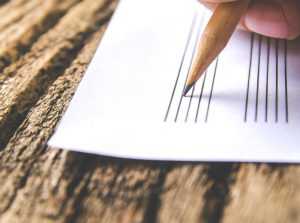 intervals, for instance, is a terrific way to introduce music theory concepts. The first few weeks of your interval ear training should be playing two separate notes, C and the G for example, and then explaining what the interval is (a Perfect 5th) and where it can be found in popular music (the Star Wars theme). After the student begins recognizing intervals separately, start playing them together. Once they have a good grasp on what intervals are and what they sound like, introduce major, minor, diminished, and then extended chords and different options for chord voicings. Begin having them learn what different scales and modes sound like and how to play them.
intervals, for instance, is a terrific way to introduce music theory concepts. The first few weeks of your interval ear training should be playing two separate notes, C and the G for example, and then explaining what the interval is (a Perfect 5th) and where it can be found in popular music (the Star Wars theme). After the student begins recognizing intervals separately, start playing them together. Once they have a good grasp on what intervals are and what they sound like, introduce major, minor, diminished, and then extended chords and different options for chord voicings. Begin having them learn what different scales and modes sound like and how to play them.
If your student is experienced enough, consider playing simple melodies and having them dictate the rhythm and melody on paper. This exercise helps promote listening skills, mastery of music notation, rhythm reading, and memorization.
Scales
Piano students of all ages and backgrounds should be introduced to scales within the first few lessons. Scales are an introduction into the idea that the piano is most easily and efficiently played with the correct fingers, posture, and hand position. When I first began teaching piano, I was surprised how quickly students as young as four or five could master the C Major scale. It just takes time, thoughtful instruction, and a mixture of enthusiasm and patience.
Start with the major scale on middle C, and have your student memorize each hand individually and then together. When my students start playing this scale with their hands together, I encourage them to play much, much slower than they usually want to, and I always emphasize that the middle fingers are played together. Once they’ve mastered this scale, we usually follow the Circle of 5ths progression, adding in one sharp with G, two with D, and so on. More complex scales will require more difficult fingering, so beginning with the relatively easy to learn C Major scale is advised here.
In your piano lesson plans, I think it’s always a good idea to talk about music theory and how it works at every opportunity, and scales are no exception. Talk to your students about scales, how to construct them, and where they can be found in popular music.
Chord Building
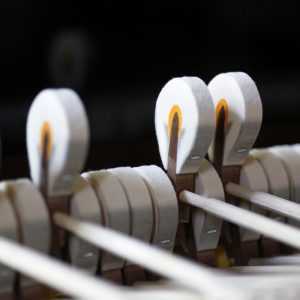 After a few lessons, it’s a good idea to discuss how to build major, minor, and diminished chords with your students. Knowing what chords are and how to build them will help your piano students understand a huge part of music. Once they know how to build chords, have your students play chords from keys they know scales from.
After a few lessons, it’s a good idea to discuss how to build major, minor, and diminished chords with your students. Knowing what chords are and how to build them will help your piano students understand a huge part of music. Once they know how to build chords, have your students play chords from keys they know scales from.
Introduce different chord voicings (inversions) and teach your piano students how to play simple chord progressions like the 12-bar Blues in multiple keys. Having your students apply music theory knowledge to multiple keys is essential because it gets them thinking of the bigger picture rather than just about a few simple key signatures they might be used to playing in. Another great exercise here for your piano lesson plans is to have your students play the chord progression and melody of the song “Happy Birthday” in three or four separate keys. This exercise helps students to learn how to identify and memorize the sound of a simple chord progression played in different keys. Chord knowledge will greatly benefit students of every background, so it’s well worth your time to make time for this during your lessons.
Sight Reading
Sight reading, the act of reading and playing completely unknown material for the first time, is a great way to help your students learn to read and not memorize lines of music. It can be extremely difficult for new piano students to actually read the music in their assigned pieces, so many try to memorize the music, and this can turn into a huge problem. On manuscript paper, write out one or two lines of a simple melody and have your students sight read slowly and at a consistent rhythm. Adding time for this in your piano lesson plans will help your students get comfortable and familiar with reading music, and eventually they’ll rely more on their music reading skills than their memories to be able to play their assigned pieces.
Assigned Pieces
It’s not a good idea to assign a piece of music to a student until they’ve gained a good amount of hand dexterity and independence, finger strength, music reading knowledge and ability to play scales and exercises in rhythm. The sort of pieces you’ll assign to your students completely depend on where they’re at in their musicianship. I wholeheartedly recommend holding a few recitals a year where your students can perform the pieces they’ve learned over the year in a supportive public setting. This helps give your lessons a specific goal and importance that will help motivate and energize your students.
A major part of piano lessons should involve the teacher checking in on the progress a student has made with the pieces of music they’re working on. Have your student play through all the material you’ve covered and provide thoughtful, detailed feedback. The sort of feedback a teacher doles out completely depends on the student. Identify things in their performance that need work or that were strong in the lesson. A good teacher keeps their students motivated, encouraged, and accountable. If a student hasn’t been practicing, then ask them about it, and stress the importance of playing frequently. As a teacher, you’ll need to learn how to celebrate every bit of progress your student makes. Take the time to discuss what different pieces of music mean, the era in which they were written, and who they were composed by.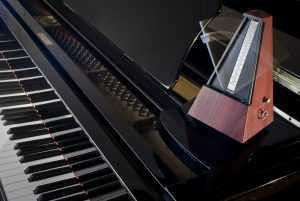
Always have a metronome present, and encourage your students to play through their assigned pieces with one as well. Metronomes can now be easily downloaded onto smartphones, so help your student with this if they need it. If you’ve already set a precedent of having your students play their scales and warmups to a metronome, practicing their pieces with one won’t be nearly as difficult.
Talk about which pieces your student will play at the recital, and what to expect during their performance. Recitals can be a truly nerve-wracking experience for students of any age, so it’s important to have a great deal of empathy for your students as you prepare them for their performance. As a teacher, you’ll need to be a source of accountability as well as compassion while preparing your students for a recital.
If your students are inexperienced, you’ll probably focus on things in your student’s playing like rhythm, music reading, and phrasing, but if your students are further along you can get more into the dynamics and interpretation of assigned pieces.
Every Student Is Unique
No two students are the same, so you’ll need to design your lessons with each student’s needs, strengths, and weaknesses in mind. If you have younger students, you’ll need to devote plenty of time for specialized warmups designed to promote correct hand positioning and muscle memory in your piano lesson plans. Consider going over material found in piano books for beginners with your young students.
Kids that are older might be more interested in learning how to play one of their favorite songs than a classical piano piece. How you want to structure your lessons is up to you, but listening to the musical goals and ambitions of your students is always a good idea. If your main goal is to teach a student how to read music for the piano, try to maintain flexibility and understand that someone’s interest in music does not necessarily equate to enthusiasm about music notation. A good teacher gives their students the tools and path toward becoming a knowledgeable, competent musician, and a huge part of that process is taking the time to uncover their interests and nurture them.
Be Flexible
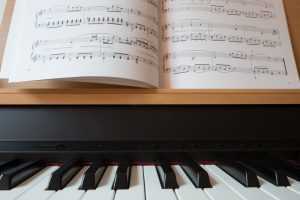
It’s important that teachers are open to flexibility in their piano lesson plans. Like us, students of any age face challenges, distractions, and shifting circumstances during the week. If your piano student hasn’t worked on the material you asked them to cover during the week, be prepared to go through that with them in your lesson. Also, if your student shows interest in a new song or piece of music, turn that enthusiasm into a teachable moment by showing them things like what key the song is in, how to play the melody, and what chord progressions are in the song. Finding ways to make music seem interesting and relatable to your students will help give them a healthy appreciation of it for a lifetime. Remember that yes, you are teaching students how to play the piano, but more importantly, you’re acting as an ambassador of music.



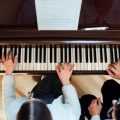




I HAVE BEEN ASIGHNED THE DUTY OF BECOMING A PIANO LESSONS TEACHER AND HAVE BEEN REQUESTED TO MAKE A WORK PLAN THAT I HAVE NEVER MADE A WORK PLAN BEFORE OF THIS KIND;SO PLEASE CAN YOUGUIDE ME DEVELOP AN APPROPRIATE WORK PLAN BEFORE MY MASTERS?
WHAT ARE THE BASICS THAT I SHOULD START WITH DURING THEIR FIRST MONTH?
Before I never thought that learning piano is needed to learn music theory. Now that I know there are many things to prepare for seriously taking a lesson. I like the way that you said: "Every Student Is Unique". That'll make people believe they are special pianist someday. Thank for a good blog.